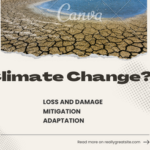Central Govt exempts genome-edited crops from stringent GM regulations: Basics Explained


The Central government has issued an order exempting certain types of genome-edited crops, SDN1 and SDN2 genome-edited plants, from the stringent regulations applicable to genetically modified or GM crops thus giving a big boost to their further research and development.
It will spur research into crops that have high yields and are resistant to pests and climate change.
It will also boost research for developing crops resistant to biotic and abiotic stresses and with nutritional superiority.
LEARNING FROM HOME/WITHOUT CLASSES/BASICS
What is a genome?
Your genome is the instructions for making and maintaining you. It is written in a chemical code called DNA. All living things have a genome; plants, bacteria, viruses and animals.
The characteristics of all living organisms are determined by their genetic makeup and its interaction with the environment. The genetic makeup of an organism is its genome, which in all plants and animals is made of DNA. The genome contains genes, regions of DNA that usually carry the instructions for making proteins. It is these proteins that give the plant its characteristics.
Your genome is all 3.2 billion letters of your DNA. It contains around 20,000 genes.
Genes are the instructions for making the proteins our bodies are built of – from the keratin in hair and fingernails to the antibody proteins that fight infection.
What is DNA?
DNA (deoxyribose nucleic acid) is a long molecule. It has a twisted, double helix shape. DNA is made up of four different chemicals, or bases. These are represented by the letters A, T, C and G. The bases are attached to two phosphate backbones. The bases are paired together; A with T, G with C. The two backbones twist around each other to give the characteristic double helix. What is genome sequencing? Sequencing is a technique that is used to ‘read’ DNA. It finds the order of the letters of DNA (A, T, C and G), one by one. Sequencing a human genome means finding the sequence of someone’s unique 3 billion letters of DNA.
The “genome editing” techniques comprise a set of methods developed to precisely modify genomes of organisms. Genome editing allows the precise modification of a plants genome similar to a delete-copy-paste-mechanism in a text editor. Using this tool, agricultural scientists can now edit the genome to insert specific traits in the gene sequence.
Genome editing employs variants of site directed nuclease (SDN) technologies and oligonucleotide-directed mutagenesis (ODM). Clustered Regularly Interspaced Short Palindromic Repeat/CRISPR associated proteins (CRISPR/Cas) systems are currently the most prominent SDN approaches.
Genetically modified (GM) foods are foods derived from organisms whose genetic material (DNA) has been modified in a way that does not occur naturally, e.g. through the introduction of a gene from a different organism. The technology is often called “modern biotechnology” or “gene technology”, sometimes also “recombinant DNA technology” or “genetic engineering”. had their DNA changed using genes from other plants or animals. Scientists take the gene for a desired trait in one plant or animal, and they insert that gene into a cell of another plant or animal.
The basic difference between genome editing and genetic modification in this context is that while the former does not involve the introduction of foreign genetic material, the latter does.
Cartagena Protocol is an international agreement that aims to ensure the safe handling, transport, and use of so-called “living modified organisms (LMOs)” resulting from modern biotechnology.





0 Comments